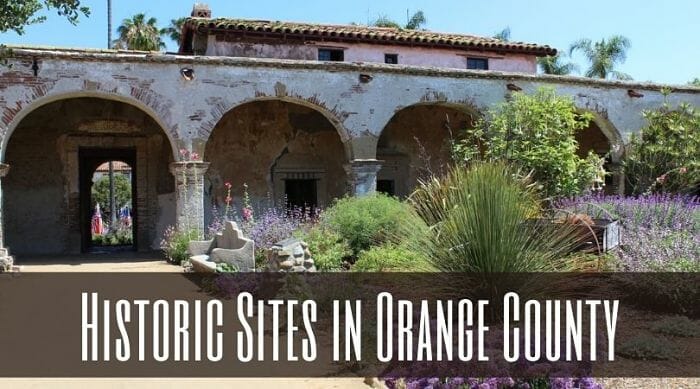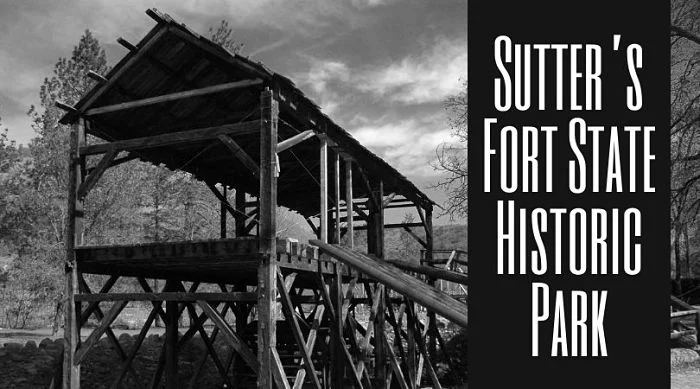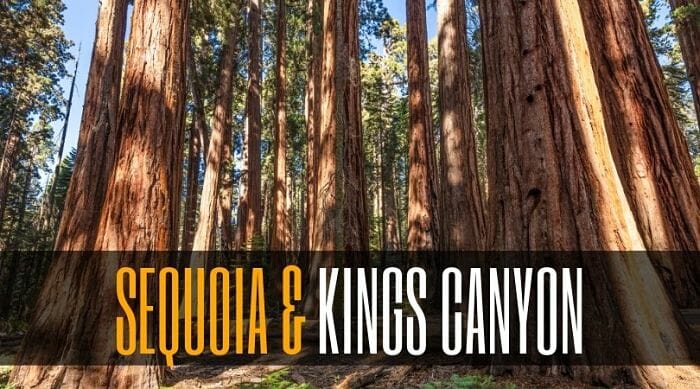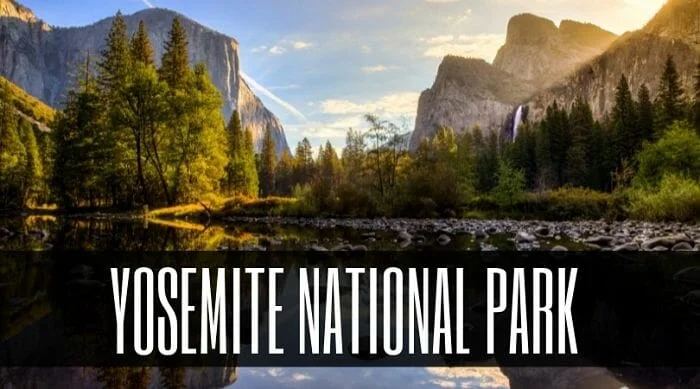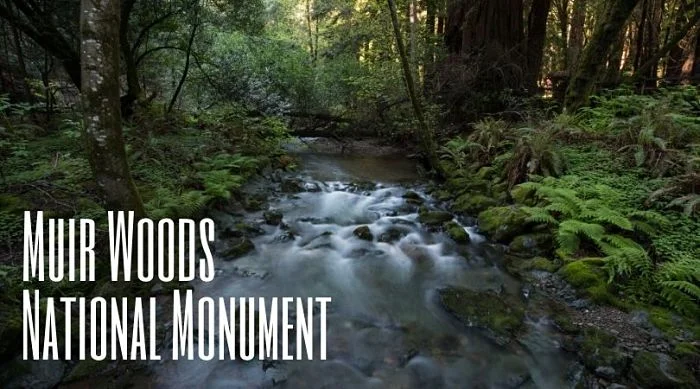Mission San Juan Capistrano is one of the most popular historic sites in Orange County. It is visited by more than 300,000 people annually, including thousands of 4th grade students studying the Missions as part of California’s history. Want to know more about the rest of the California missions? Here’s a look at the 21 Spanish Missions on the California Mission Trail.
Download the California Missions Map | JPG Format | PDF Format
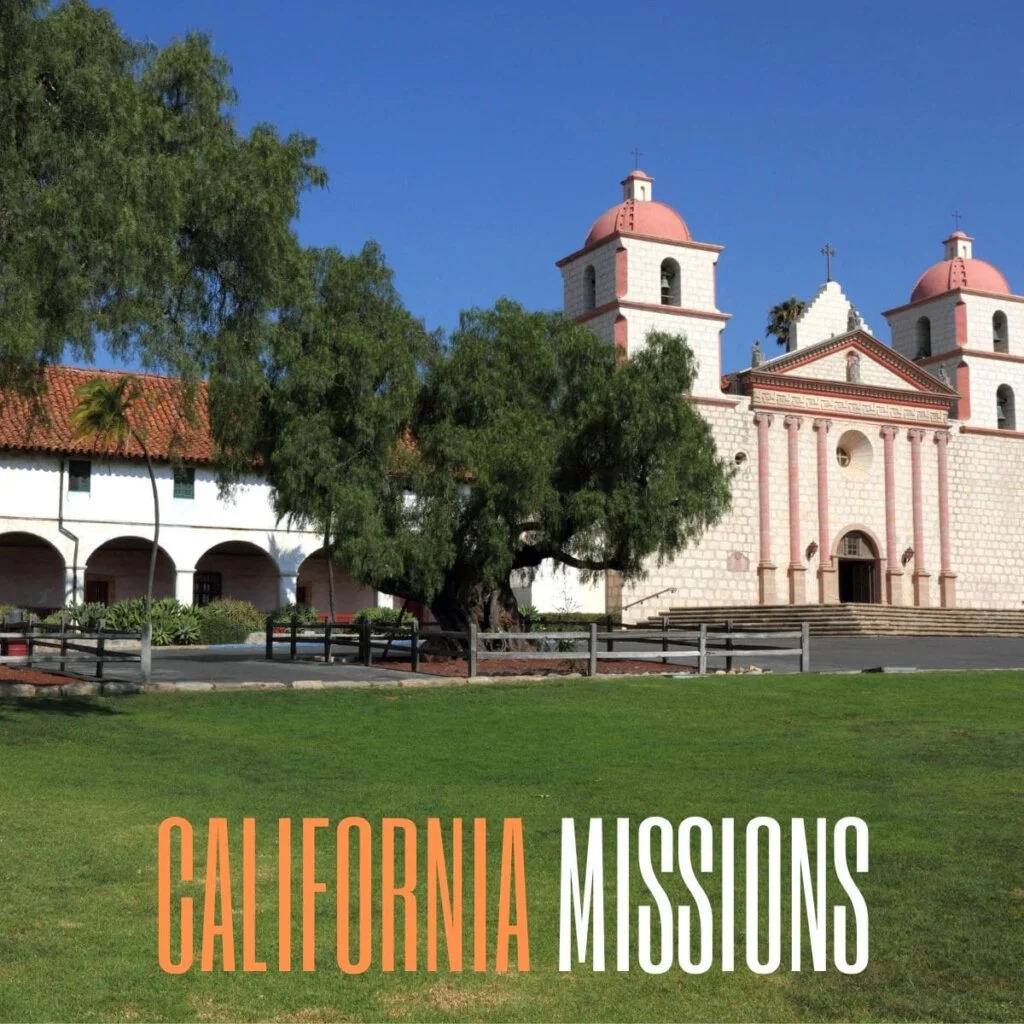
List of Missions in the Order Founded
1. 1769 – Mission San Diego de Alcalá
2. 1770 – Mission San Carlos Borromeo de Carmelo
3. 1771 – Mission San Antonio de Padua
4. 1771 – Mission San Gabriel
5. 1772 – Mission San Luis Obispo de Tolosa
6. 1776 – Mission San Francisco de Asís (Mission Dolores)
7. 1776 – Mission San Juan Capistrano
8. 1777 – Mission Santa Clara de Asís
9. 1782 – Mission San Buenaventura
10. 1786 – Mission Santa Barbara
11. 1787 – Mission La Purísima Concepción
12. 1791 – Mission Santa Cruz
13. 1791 – Mission Nuestra Señora de la Soledad
14. 1797 – Mission San José
15. 1797 – Mission San Juan Bautista
16. 1797 – Mission San Miguel Arcángel
17. 1797 – Mission San Fernando Rey de España
18. 1798 – Mission San Luis Rey de Francia
19. 1804 – Mission Santa Inés
20. 1817 – Mission San Rafael Arcángel
21. 1823 – Mission San Francisco Solano
Traveling the California Mission Trail from south to north from San Diego to Sonoma the missions include San Diego de Alcala, San Luis Rey de Francia, San Juan Capistrano, San Gabriel Arcangel, San Fernando Rey de Espana, San Buenaventura, Santa Barbara, Santa Ines, La Purisima Conception, San Luis Obispo de Tolosa, San Miguel Arcangel, San Antonio de Padua, Nuestra Senora de la Soledad, San Carlos Borromeo de Carmelo, San Juan Bautista, Santa Clara de Asis, San Jose, San Francisco de Asis, Mission Dolores, San Rafael Arcangel, San Francisco Solano.
San Diego de Alcala
The 1st Mission – Founded July 16, 1769
10818 San Diego Mission Road, San Diego, CA
Mission San Diego de Alcala was originally founded by Junipero Serra on Presidio Hill and consisted of grass huts and brush covered enramadas. The mission relocated about five and a half miles inland in 1774 at the village of Nipaguay.
The structure we see today features a 46-foot tall bell wall with five bells. The largest bell (Mater Dolorsa) weighs 1,200 pounds. The original church was built in in 1813, but after years of neglect and deterioration the mission and church were rebuilt and fully restored in 1931.
Population at the mission peaked between 1797 and 1831 with an average of 1,500 people. The highest recorded population was 1,829 people in 1824.
Livestock were common on the mission grounds, and by 1822 there were over 30,000 animals here including over 9,000 cattle and 19,000 sheep. Agriculturally, the mission produced wheat, barley, corn, beans, peas, lentils, garbanzos, and habas.
A dam was built along the San Diego River to supply water to the mission, becoming the first major irrigation system in California. You can explore the remains of the dam in Mission Trails Regional Park.
Today, the mission is open for tours, mass, and special events.
San Carlos Borromeo de Carmelo
The 2nd Mission – Founded June 30, 1770
3080 Rio Road, Carmel, CA
Mission San Carlos Borromeo de Carmelo, also called Mission Carmel, was founded by Father Junipero Serra. He is buried at this mission beneath the floor of the sanctuary.
This mission was originally established in Monterey at the Presidio but was relocated to the Carmel Valley in 1771, and the current church was completed in 1797. By the time restoration began on this mission in 1932, it had largely deteriorated and only the church ruins remained. Extensive excavation of the foundation was required to determine the mission layout, and restoration continued for nearly 5 decades.
Population at this mission peaked in 1795 with 876 people. Cattle and sheep were the most common livestock, with approximately 10,000 head in peak years.
Mission Carmel contains art and original artifacts, and a large wooden cross recreated on the site where a cross erected by Father Serra was discovered during restoration. The Carmel Mission Orchard House, dating back to 1774, is one of the oldest residential dwellings in California. The original fountain can be seen in the rear courtyard.
Today, visitors to the mission can attend mass or take informational and educational tours.
San Antonio de Padua
The 3rd Mission – Founded July 14, 1771
17 Mission Road, Jolon, CA (Fort Hunter-Liggett Reservation)
Located in the Santa Lucia Mountains, the oak studded valley is largely unspoiled, remaining much like it was when the mission was established. The church here was completed in 1813, and the mission was fully restored between 1903 and 1908. William Randolph Hearst and the Franciscans contributed to additional mission restoration between 1948 and 1952.
Mission population peaked in 1806 at 1,217 people and in 1828, the mission had 20,118 animals, primarily cattle and sheep. The mission was largely self sufficient, agriculturally, producing wheat, barley, corn, beans, and peas.
The first Christian wedding in California took place here in 1773 and a mural on the mission wall celebrates this event. There are many historic artifacts on the mission grounds and mission-era structures including the pits for tanning cattle hides and the original millrace which brought water to the mission. There are also two figureheads from colonial frigates on display here that were brought to the mission by sailors.
Today, visitors can attend weekly mass and a year-round retreat center is open to all denominations. In addition to educational tours, visitors can attend special events here like Mission Days and an annual Fiesta.
San Gabriel Arcangel
The 4th Mission – Founded September 8, 1771
427 S Junipero Serra Drive, San Gabriel, CA
The San Gabriel Mission is located approximately nine miles east of downtown Los Angeles. Originally established in the Montebello Hills, the mission moved to its current site in 1775. The mission featured extensive vineyards, orchards, and gardens. Its vineyard was the largest in Spanish California, and the vines from this location is the source of many of the vines planted at other missions.
The church at this mission was completed in 1805 and was uniquely designed in a fortress-style with capped buttresses and long narrow windows to resemble a cathedral in Cordoba, Spain. The bell wall here contains six bells, the oldest cast in Mexico City in 1795 and the largest dating back to 1830 and weighing over one ton.
The mission began with only 128 animals in 1772, and peaked in 1829 with over 40,000, primarily sheep and cattle. It was one of the most productive agricultural missions, harvesting significant amounts of wheat, barley, corn, beans, peas, lentils, and garbanzos.
Visitors can attend mass here or take educational and informational tours. There are also special events hosted here throughout the year including Mission History Days, reenactments, history fair, and an annual Fiesta.
San Luis Obispo de Tolosa
The 5th Mission – Founded September 1, 1772
751 Palm Street, San Luis Obispo, CA
Mission San Luis Obispo sits on its original site and was the first mission built in the land of the Chumash people. It was built in a spacious valley with a nearby stream. Today, the mission is in the heart of Downtown San Luis Obispo.
The church at Mission San Luis Obispo was completed in 1794, and the vestibule was added in 1820. There are three bells on the façade of the church. The L-shaped church here is the only one of its kind among the California Missions. Also distinctive to this mission is the front colonnade (currently the museum and gift shop) which consists of 11 round columns on square pedestals.
Notably, in 1776 an attack with an arrow with a burning wick was fired into the thatched roof of the mission causing a fire that severely damaged several buildings. They began experimenting with making tile, and by 1790, most missions had tile roofs added to their structures, making them less vulnerable to attacks.
The highest recorded population at Mission San Luis Obispo was 832 in 1804, and they had a stable herd of livestock with approximately 8,000 sheep and cattle in 1832. The mission may have had a small population, but it was the 4th highest producer of wheat. They also produced barley, corn, beans, peas, and lentils, and there were grape arbors and a lush garden.
Visitors can attend mass here as well as educational and informational tours. There are also a handful of events here held throughout the year hosted by the parish and the city.
San Francisco de Asis
The 6th Mission – Founded October 9, 1776
3321 16th Street, San Francisco, CA
Located just a half mile from its original site, San Francisco de Asis, also known as Mission Dolores, is situated near San Francisco Bay. Native Americans common to the area included the Ohlone, Miwok, and Patwin tribes.
The church at Mission Dolores was dedicated in 1791 and is the oldest intact building in San Francisco – an impressive feat considering the earthquakes, fires, and other disasters that have hit the city. It was constructed with 36,000 adobe bricks. The chapel was restored and retrofitted in 1990 and 1994. There are three original bells at this mission dedicated to San Francisco, San Jose, and San Martin. They hang from rawhide thongs above the entranceway and are still in use today.
There is a mass grave of the mission Indians that were buried here called the Grotto of Our Lady of Lourdes Shrine, and the mission cemetery, although smaller than the original plot, is now a quiet oasis with gravestones that tell stories of the city and the life of the mission. More than 5,000 Native Americans and Mission inhabitants are buried here. Take a moment to visit the statue of Father Junipero Serra in the cemetery. It was placed in 1918 and is said to be one of the best statues of the mission’s founder.
Population at this mission was relatively low, with peak population reaching 1,251 in 1820. Many Native Americans left the mission as it was plagued by disease. Livestock was also irregular, peaking at just over 20,000 animals around 1814, and dropping to under 10,000 in 1834. Agricultural production here was mediocre. They harvested the same crops as the other missions, but on a much lower level of productivity.
Visitors to Mission Dolores can attend regular mass hours. Tours and field trips are also available here.
San Juan Capistrano
The 7th Mission – Founded November 1, 1776
26801 Ortega Highway, San Juan Capistrano, CA
Mission San Juan Capistrano, also known as the Jewel of the Missions, is located within sight of the Pacific Ocean, and the town was developed around the mission. The nearby Los Rios Neighborhood is the oldest neighborhood in California. Native Americans common to the area included Takic speakers of the Acjachemen villages.
A small church was built on this site in 1778, but it was replaced by the Serra Chapel in 1782. This is the last remaining chapel that Father Serra held mass in. Between 1797 and 1806, the Great Stone Church was constructed to accommodate the growing population here. An earthquake in 1812 destroyed the church and killed 40 people inside.
There are four bells here, with two of them dating back to 1796, the others 1804. The two largest bells were recast and and the originals rehung in what remains of the Great Stone Church on the impressive freestanding Bell Wall. Today, you can witness a ringing of the bells ceremony during one of their special events.
Mission San Juan Capistrano had an average population, peaking at 1,361 in 1812. They had a variety of livestock including cattle, sheep, goats, pigs, horses, and a mule. In 1819, they had over 31,000 animals. Agricultural production here was good and crops of wheat, barley, corn, beans, peas, lentils, and garbanzos were consistently harvested.
Visitors to Mission San Juan Capistrano can attend regular masses or take one of the many educational and informational tours available. The mission also hosts several community events throughout the year including Field of Honor, Capistrano Lights, Music Under the Stars, the Swallows Day Parade ending spot and St. Joseph’s Day.

Santa Clara de Asis
The 8th Mission – Founded January 12, 1777
500 E. Camino Real, Santa Clara, CA
Mission Santa Clara is located near the southern end of the San Francisco Bay. The mission was destroyed and rebuilt six times. Native Americans common to the area included the Ohlone, Miwok, Tamyen, and Yokuts. This mission is notably the first to honor a female saint, Saint Clare of Assisi.
The church that stands today is a recreation of the 1825 church that was destroyed by a fire in 1926. There are four bells hanging here – one is an original donated by King Carlos IV of Spain in 1798. A bell donated by King Alphonse XIII of Spain in 1929 to replace one of the bells lost in the fire, is still in use today. The bells at Mission Santa Clara have rung every evening since 1798. Near the entrance, you can see a large cross that was erected in 1777.
An interesting thing to note about Mission Santa Clara is that it’s the site of the first college and oldest university in California, Santa Clara University, founded in 1851. Other things to see here include a well-preserved part of the original adobe wall and an Altar of Remembrance to honor those who’ve died.
Population at Mission Santa Clara peaked in 1795 at 1,514. This mission had the second largest livestock herd with over 20,000 animals including cattle, sheep, pigs, horses, and mules. They harvested primarily grain and produce at this mission.
Visitors to Mission Santa Clara can attend mass, take an informational or educational tour, or attend a university or community event held here.
San Buenaventura
The 9th Mission – Founded March 31, 1782
211 East Main Street, Ventura, CA
Mission San Buenaventura is located on its original site, and unlike some other missions, was never abandoned or closed. It is built on land of the Chumash people near an Indian village of Mitsquanaqa’n, and neophytes here were known as Venturenos.
The church that stands today is the second on the site. The first was destroyed in 1792 by a fire. The current structure was dedicated in 1809 and reconstructed in 1816 with walls that are 6 feet thick at the base. It was restored in 1957. A three tiered bell tower contains five bells that were originally borrowed from Mission Santa Barbara. The two oldest bells date back to 1781 and the newest was cast in Paris in 1956.
Population at San Buenaventura peaked in 1816 at 1,328. Fed by an aqueduct that directed water to the mission from the Ventura River, they produced considerable amounts of wheat, barley, corn, beans, peas, lentils, garbanzos, and habas.
Some of the highlights of this mission include the gardens and grotto, a 400-year old bulto in the Shrine of the Crucifixion, and a mission-era olive press.
Visitors to Mission San Buenaventura can attend mass, take an educational tour, or attend one of the special events here including the May Pilgrimage Process and the San Buenaventura Feast Day.
Santa Barbara
The 10th Mission – Founded December 4, 1786
2201 Laguna Street, Santa Barbara, CA
Mission Santa Barbara was built on a hill overlooking the ocean on the land of the Chumash people at the Native site of Xana’yan. Neophytes here were called Barbareno and Canalenos.
The original church was built in 1820. A portion of the church collapsed and was rebuilt in 1833. The church was damaged in an earthquake in 1925 and underwent extensive restoration. The church features two towers with a total of six bells.
Population at Mission Santa Barbara peaked in 1803 with 1,792 people. Their livestock herd was sizeable with a peak of nearly 14,000 animals in 1821, mostly cattle and sheep. Agriculturally, Santa Barbara was relatively productive, harvesting significant amounts of wheat, barley, corn, beans, peas, lentils, garbanzos, and habas. The mission also featured fruit trees and two vineyards.
Santa Barbara is the only mission that has been continuously operated by the Franciscans. Also notable, Juana Maria, the Lone Woman of San Nicholas Island from Scott O’Dell’s book Island of the Blue Dolphins was buried in the cemetery here in 1853.
Visitors to Mission Santa Barbara can attend mass, take an educational tour, visit the large 10-room museum, or attend one of the many events hosted here.
La Purisima Concepcion
The 11th Mission – Founded December 8, 1787
2295 Purisima Road, Lompoc, CA
La Purisima Concepcion is located on the edge of Lompoc, originally established on the land of Chumash people at the Village of Algsacupi. Common Native Americans here were known as Purismeno, Ineseno, Island Chumash, and Yokuts.
The church here has been restored and the mission is now a State Historic Park. It is now a living history museum with docents dressed in period clothing walking the grounds and live animals in the mission corral – the only mission to currently have live animals. There is an active blacksmith shop and special activities to offer educational experiences.
Mission La Purisima is the most extensively restored of all the missions. The original mission was laid out in the traditional quadrangle format, but the newly rebuilt mission is built in a linear form. This is the only mission in this format.
Population here averaged around 1,000 people and peaked in 1804 at 1,520. There were approximately 22,000 head of livestock here including cattle, sheep, goats, pigs, horses, and mules. Agriculturally, this was the third largest producer of the missions, harvesting significant amounts of wheat, barley, corn, beans, peas, lentils, garbanzos, and habas. There were also two large vineyards.
A significant event at this mission is the 1924 neophyte revolt. The mission was captured by rebels and held for a month. Sixteen Native Americans and one soldier were killed and seven Indians were condemned to death.
This location is not an active church so visitors will not be able to attend mass, rather they can enjoy the living history elements and attend one of the many special events hosted here including reenactments.
Santa Cruz
The 12th Mission – Founded August 28, 1791
126 High Street, Santa Cruz, CA
Mission Santa Cruz moved to its current location near the San Lorenzo River in 1793. It sits on the native site of Uypi, where common Native Americans included the Awaswas, Costanoans, and Yokuts.
The original church here was destroyed by an earthquake and it was replaced several times with new structures. The current mission chapel, built in 1931, is a one-third scale replica of the 1795 church. None of the original bells survived when the bell tower collapsed in 1840. The current bell is a 20th century replica.
Natural disasters like earthquakes and the close proximity to Branciforte (a pueblo founded with prison convicts from Guadalajara) limited the success of Mission Santa Cruz. Population beaked at just over 500 in 1796. Small amounts of grain and produce were harvested here, and there was a small her of less than 10,000 animals.
There are very few remaining original artifacts at the mission due to damage caused by the earthquakes and looting by the prisoners of Branciforte in 1818. However, nearby at the Santa Cruz Mission State Historic Park, you can see California’s only original neophyte housing. Also, in the small garden behind the mission, you can find the original hand-carved baptismal font.
Visitors here can attend mass at the mission’s Parish of the Holy Cross.
Nuestra Senora de la Soledad
The 13th Mission – Founded October 9, 1791
36641 Fort Romie Road, Soledad, CA
Mission Soledad is located in the Salinas River Valley 30 miles southeast of Monterey. Common Native Americans associated with this mission include the Chalon, Esselen, Yokuts, and Salinan. It is believed that the mission site is on an Esselen Village known as Chuttusgelis.
The original church was destroyed in 1824 by floods that plagued the area. A new chapel was built in 1932 and was restored in 1954. The bell, now hanging inside, is the original mission bell, cast in 1794 in Mexico City, and the original Stations Of The Cross oil paintings are located in the sanctuary.
Population at Mission Soledad was low, peaking at 687 in 1804. There were over 10,000 animals at the mission’s peak, and agriculturally, production was pretty low here, ranking in the lowest third of all the missions. Their primary crops were wheat, barley, corn, beans, and peas.
The Soledad Mission was abandoned for nearly 100 years. Restoration began in 1954. Visitors can see ruins of the old adobe mission walls and the Chapel and Padre’s wing sits in an actively farmed agricultural field.
Visitors can attend mass on select days at Mission Soledad, take a self-guided tour, or attend one of several special events held throughout the year like arts and crafts shows and concerts.
San Jose
The 14th Mission – Founded June 11, 1797
43300 Mission Blvd, Fremont, CA
Mission San Jose is also sometimes called The Mission of the Most Glorious Patriarch Saint Joseph. It was built on the land of the Costanoan Ohlone People. Other common Native Americans here included Miwok, Patwin, and Northern Valley Yokuts.
The mission was the second most prosperous, but was destroyed in an earthquake in 1868. The church was restored between 1982 and 1985 and includes a gift shop and museum in the former padres quarters with maps, displays, and artifacts. Considered one of the most authentic mission structures in the state and features four of the original bells. The San Jose Mission was also well known for Fr. Narciso Duran’s orchestra and choir. The church remains open for mass, weddings, and baptisms.
The mission’s population was at its peak in 1831 with over 1,800 residents. This agricultural powerhouse had large herds of livestock with 12,000 cattle, 11,000 sheep, and 1,100 horses. The mission also produced vegetables, beans, corn, and barley, and had olive and fruit tree orchards and a vineyard.
Visitors here can attend mass, take an informational tour, or attend one of the many special events held here throughout the year.
San Juan Bautista
The 15th Mission – Founded June 24, 1797
406 Second Street, San Juan Bautista, CA 95045
Old Mission San Juan Bautista is also sometimes called The Mission of the Glorious Precursor of Jesus Christ, Our Lord San Juan Bautista. The Mission was established on the village of Popeloutchom, land of the Mutsun tribe of the Coastanoan people.
Located at the intersection of El Camino Real and El Camino Viejo, the mission sits near the only remaining Spanish Plaza in California. San Juan Bautista has been well restored, and the 12-block Spanish Plaza surrounding the mission contains 30 historic buildings. The original church was built without a bell tower and two bells were hung from a wooden rack. During the restoration in 1976, a companario was added with three bell openings. One of the original bells still hangs there today.
A few fun facts about San Juan Bautista is that this church acquired the largest collection of apostolate paintings of the mission chain, and it was the setting for the 1957 film Vertigo. This mission was also known for the Indian Boys Choir led by Fr. Estevan Tapis.
Population at the mission peaked in 1823 at just over 1,200. The mission produced over 90,000 bushels of peas, corn, beans, wheat, and barley, and there was a reasonable herd of livestock including cattle, sheep, swine, horses, and mules. Cattle were slaughtered on a weekly basis to provide food for the mission community. There were also orchards, gardens, and vineyards at this mission.
Mission San Juan Bautista hosts an annual Midwinter Solstice Illumination of the main altar and the public is invited to attend. This location has been an active Roman Catholic church since 1797 and the current church has been used continuously since 1812. This is a popular location for weddings. Visitors to San Juan Bautista can attend regular and special masses, or enjoy tours and field trips to explore the grounds and gardens and learn about the mission’s history and the people who lived there, including the Native people.
San Miguel Arcangel
The 16th Mission – Founded July 25, 1797
775 Mission Street, San Miguel, CA 93451
Mission San Miguel Arcangel, or Mission San Miguel, was founded by Father Fermin Francisco de Lasuen and built on the land of the Salinan people about half way between Los Angeles and San Francisco.
The current church was completed in 1818, and a unique feature of this mission is the colonnade with 12 differently sized arches. There are colorful murals painted on the interior of the church and are considered the most authentic and best preserved of all the missions.
A 2003 earthquake damaged the mission and it was closed until 2009 after it was fully restored. There was no traditional bell tower at Mission San Miguel, and bells were hung here from a wooden beam in an archway. A small bell rack was added in the early 1900s, and a full bell tower was built later. The bells were recast from broken bells donated by other missions. A second bell tower was added in the 1950s, but these bells are not real. They are made from cement.
In 1845, some of the mission buildings were sold and used as a store, dance hall, offices, and a saloon. One of the largest original mission era cemeteries is here on the east side of the church and over 2,000 Indians were buried here. There is also an impressive collection of artifacts in the mission museum.
At its peak in 1814, the population at San Miguel was just under 1,100. There was a large herd of livestock here at its peak, with over 24,000 animals in 1821. San Miguel also produced significant amounts of wheat, barley, corn, beans, and peas, and there were fruit orchards on the mission grounds.
Visitors to San Miguel can attend mass, the annual parish fiesta, participate in special events held here, or tour the grounds to see one of the most scenic California Missions.
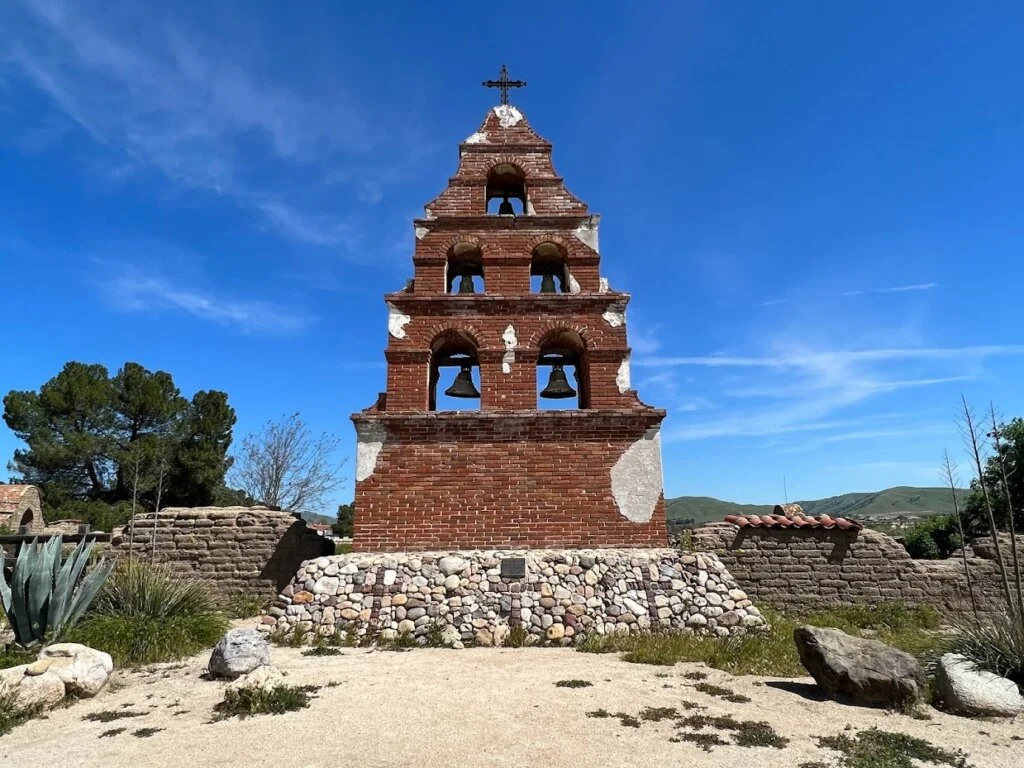
San Fernando Rey de Espana
The 17th Mission – Founded September 8, 1797
15151 San Fernando Mission Boulevard, Mission Hills, CA 91345
The San Fernando Mission, also known as the Mission Of Saint Ferdinand, King of Spain, was founded by Father Fermin Francisco de Lasuen and is located in the San Fernando Valley. The mission was established on the native site of Achooykomenga/Pasheeknga.
The highlight of this mission is the Long Building, or the Convento, which features a colonnade with 19 arches and measures 243 feet in length, which was built in 1822. The church you see today is a replica of the third church that was originally built in 1806, but destroyed in 1971 by an earthquake. A single bell hangs in the church here. While the church itself is simple, the altar, reredos, and pulpit are quite elaborate, carved from walnut, and date back to 1687.
Gold was discovered nearby in 1842, but lasted only about 4 years, and for many years following, treasure hunters dug up mission walls in search of gold, thinking that the padres had hidden it.
At its peak, the mission had a population of over 1,000, and in 1819, there were nearly 13,000 cattle and an average of 5,000 sheep. San Fernando harvested more than 150,000 bushels of wheat, barley, corn, beans, peas, garbanzos, and habas. There were also over 30,000 grapevines and more than 1,000 fruit trees.
Catholic weddings are conducted here every day except for Sunday, and the grounds are open for visitors daily.
San Luis Rey de Francia
The 18th Mission – Founded June 13, 1798
4050 Mission Avenue, San Luis Rey, CA 92068
Mission San Luis Rey de Francia was founded approximately five miles from Oceanside on a hill overlooking the valley of the village of Tacayme. The mission was joined by the Luisenos, or the Payomkowishum, and took up approximately six acres.
The church was built in 1815 and is the last surviving church that was laid out in cruciform design. Over the sanctuary, there is a cupola with 144 panes of glass on a wooden dome. This was added in 1829. There is one bell tower here with four bells, and an original hand-hammered Baptismal Font that can be seen in the museum. The many Roman arches along the front of the convento is one of San Luis Rey’s distinguishing features and have been fully restored.
The site of Mission San Luis Rey was used in the filming of episodes of Walt Disney’s 1950’s TV series, Zorro, the first pepper tree in California was planted here, and bullfights were held here in the quadrangle during the mission era.
San Luis Rey was the most prosperous of all the missions up to this point, with a population of nearly 3,000 in 1825. At the peak, there more than 57,000 head of livestock and harvesting over 400,000 bushels of beans, barley, corn, and grains.
Santa Ines Virgen y Martir
The 19th Mission – Founded September 17, 1804
1760 Mission Drive, Solvang, CA 93463
Mission Santa Ines Virgen y Martir was established in the Santa Inez Valley on the land of the Chumash and first populated by people from Santa Barbara and Purisima. It remains on its original site near the town of Solvang – an area founded in 1911 by the Danish.
The church that stands on-site today dates back to 1817, and was repainted in 1825. The original bell wall collapsed in 1911 and was rebuilt with five bells, but was restored to its original design in 1947. Three of the missions bells from 1804, 1808, and 1818 are currently on display in the museum. Also on display is a collection of vestments worn by Father Serra and others, some dating back to the 17th century.
The mission site also featured a grist mill and a fulling mill that date back to 1820 and 1821. These remains are currently unavailable to the public for viewing, but the California State Parks department is planning to develop a new state park dedicated to the site.
In 1824, violence against a neophyte by a soldier at the mission triggered the largest Indian uprising of the mission era here.
After the mission era and secularization, the mission site became California’s first seminary, Our Lady of Refuge in 1844.
Santa Ines was only in use during the mission era for about 30 years and the population peaked at under 800. The mission had a decent herd with over 9,000 head, and had a surprisingly high production of wheat.
San Rafael Arcangel
The 20th Mission – Founded December 14, 1817
1104 5th Avenue, San Rafael, CA 94901
San Rafael Arcangel was originally built as a sub-mission or hospital asistencia, just 15 miles north of San Francisco. It gained full mission status in 1822, and was only in operation for 12 years during the mission era.
The ruins of the mission were completely removed in 1870 and a replica chapel was built on the site in 1919. The original structure measured only 87 feet in length and 42 feet wide, with rooms for a hospital, storage area, chapel, and padre’s quarters. San Rafael was damaged badly during an Indian attack in 1828, but loyals saved the mission padre’s life by hiding him in nearby marshes.
Although the original mission structure never had a bell tower, there are three original mission bells on display in the museum. Three replica bells hang on a bell rack near the entrance to the chapel.
Later, San Rafael became California’s first sanitarium, and in 1846, John C. Fremont used the mission as headquarters during the Mexican-American War. There was also a significant boat-building operation here.
San Rafael peaked in population in 1826 with just over 1,000 people. Livestock collections were small and agricultural output was low. However, there were vineyards and orchards here that were known for their excellent pears.
San Francisco Solano
The 21st Mission – Founded July 4, 1823
114 East Spain Street, Sonoma, CA 95476
Mission San Francisco Solano, also known as Mission Sonoma, is located in the middle of Sonoma about 40 miles north of San Francisco at the village of Huchi. Indians who joined the mission belonged to the Coast Miwok, Pomo, Suisunes, Wappo, and Patwin tribes. This mission was only in operation for 11 years.
The Mission today is part of Sonoma State Historic Park and is no longer an active Catholic church. The buildings here were rebuilt between 1911 and 1913, and restored in 1943-1944. The Bear Flag Revolt took place in Sonoma in 1816, across from the Mission, and a monument to commemorate the event is located nearby.
The church here is small, measuring 105-feet by 22-feet, and an original 1829 bell hangs on a wooden frame outside the mission. The padre’s quarters is now a museum where you can find several artifacts and exhibits, and mission era paintings can be viewed in the dining room.
Population at San Francisco Solano peaked at just under 1000. They had a reasonable herd of livestock with over 5,000 head, although this was the smallest herd of all the missions. Agricultural production was limited due to the lack of time to establish productive crops. There was a large vineyard here though.
San Francisco Solano was originally established without approval, and marks the end of California’s Mission Trail.
Frequently Asked Questions
How many missions are there in California?
There are 21 missions in California that were established between 1769 and 1833. All 21 are still standing.
Who built the California missions?
The California missions were built by Spanish Franciscan friars, led by Father Junípero Serra with support from Spanish military forces and Native American labor.
Why did the Spanish establish missions in California?
The Spanish established missions in California to spread Christianity, exert political control, facilitate economic development, secure territory and expand their Spanish influence in the region.
Can you visit the California missions?
All 21 of the original missions are open to visitors and feature tours, a gift shop and museum, and most of them hold mass on Sundays.
Is there a mission in Mission Viejo?
Despite the name, Mission Viejo does not have an actual mission. However, it is believed that Spanish explorers made efforts to establish one in the area. When Mission San Juan Capistrano was constructed, the former mission site became known as Mision Vieja, which translates to “Old Mission” in Spanish.

